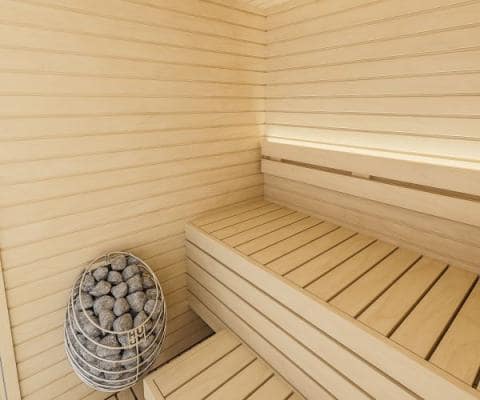Traditional Sauna for Dummies
Traditional Sauna for Dummies
Blog Article
All about Traditional Sauna
Table of Contents3 Easy Facts About Traditional Sauna ShownAll about Traditional SaunaNot known Facts About Traditional SaunaTraditional Sauna Things To Know Before You BuyHow Traditional Sauna can Save You Time, Stress, and Money.
Many of the weight shed in a sauna is water loss and is re-gained upon rehydrating. Without a question sauna can be a vital part of a healthy and balanced weight loss program. To look at the differences in between conventional and IR saunas, I will certainly separate these right into proven, academic, and produced differences.Thus, the hottest point in the saunawhich is at the ceiling straight over the sauna heateris commonly in between 185 and 190 F. Claims that a conventional sauna exceeds 200 F is just not true and not appropriate for electrical saunas offered in the US. The temperature for a far-infrared sauna is typically set between 120 and 140 F; nonetheless, unlike the traditional sauna, the goal in and IR area is not to accomplish a high temperature.
Due to this, the temperature difference is nearly irrelevant, since excessive sweating leads to both sauna kinds, however the technique of heating up the body is different. In an IR sauna the bather will really feel warm and will certainly sweat profusely, but at a lot reduced temperature levels (Traditional Sauna). Hence, if the goal is to spend longer time periods in the sauna, the IR sauna is an excellent option
When a traditional sauna has actually been properly heated, the sauna walls are cozy, the air temperature level has accomplished established temperature level and the rocks are extremely heated. As a fascinating side note, the warmed wall surfaces and the rocks are releasing far-infrared warm, combined with the warmed air, to produce an "covering heat".
The 10-Minute Rule for Traditional Sauna

When the heat is achieved, the aspects cycle on and off to preserve the high temperature level. Many conventional sauna customers delight in pouring water over the rocks to produce steam to raise sauna humidity degrees. The benefits of pouring water over the rocks consist of: making the area more comfortable, moistening the nasal passages, and permitting the use of aromatherapy by blending necessary oils with the water.

When the power goes into the body, it triggers the body temperature level to enhance and ultimately results in sweating. In an infrared sauna it is essential for the emitters/heaters to remain on virtually constantly. Because there is no mass of rocks to keep heat, the sauna will certainly cool if the emitters turned off.
As mentioned above, the sauna bather in an infrared area intends to position himself in front of running emitters to get maximum gain from the heat. The heating time for the 2 rooms can be really various, depending upon just how the rooms are utilized. For a traditional sauna, a bather must allow 30-40 mins for the space to achieve a wanted temperature and to correctly pre-heat the rocks.
About Traditional Sauna
A well created sauna will normally accomplish a temperature of 150-160 F in regarding 30-40 minutes. For hotter temperatures, the room may require to heat for a longer duration.

Conventional saunas often tend to be bigger (therefore use even more electrical power) than infrared saunas, although typical saunas are absolutely available in one and two individual dimensions too. For a two-person conventional sauna, 5x6 or 5x7 size is most preferred. The leading bench can easily seat 2 or three people and is additionally long sufficient to rest throughout the sauna session.
What Does Traditional Sauna Mean?
The ordinary cost per kWH of power in the U.S. is roughly $0.11, so a 4.5 kW heating unit will certainly cost roughly $.50 to run for one hour, if the heating unit runs continually for one hour. Normally a sauna heating system will certainly compete 75% of the initial hour and 50% of subsequent hours on because the components cycle once the set temperature level is achieved.

There is a rarely discussed difference in the social experience in between the 2 areas. While our culture has shed some of the social benefit of the typical sauna experience, it can be really socially gratifying (Traditional Sauna). From family members time in the sauna, to heart-felt conversations with significant others, to sauna partiesthe conventional sauna experience can lead to intimate mingling
Unknown Facts About Traditional Sauna
The majority of higher end infrared spaces include tinted light published here treatment, sound systems and full-glass fronts.
Report this page